Add Your Heading Text Here
There, under the shadow of Sabalan Hill,
stands Heriz, the district, with its fertile
villages by Talxe-Roud’s bank. This district
is the most elevated dwelling place of the
mountainous Azarbaijan and the dwellers
were mostly rug-makers in the past, making
the region one of the most well-known
Persian rug producing areas. Nowadays the
craft loses gradually its dominance as the
traditional life-style fades. All the same,
Herizes are still famous for their
unmistakable colors and designs as well as
their versatility of size.
Richened by Sabalan’s minerals (chiefly
copper), Talxe-Roud and its branches water
grass and sheep alike, making the wool
coarse and endure, which answer well to the
need of mountain folks for warm and durable
rugs.
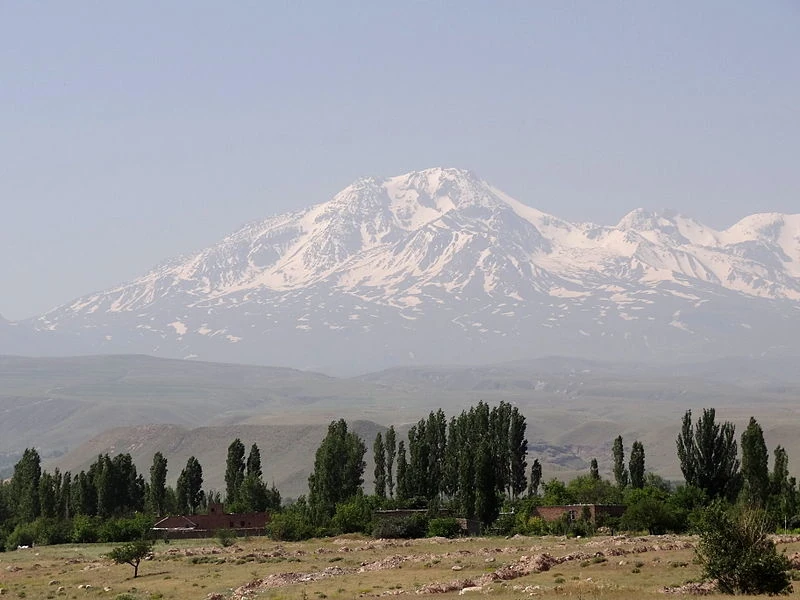
This exclusive property of material has
affected the designs and furthermore made
Herizes of the most long-lasting amongst
their kind, and that explains why there are a
good number of Heriz antiques in museums
around the world, keeping the original
designs alive.
Technical aspects and the structure of Heriz Rugs
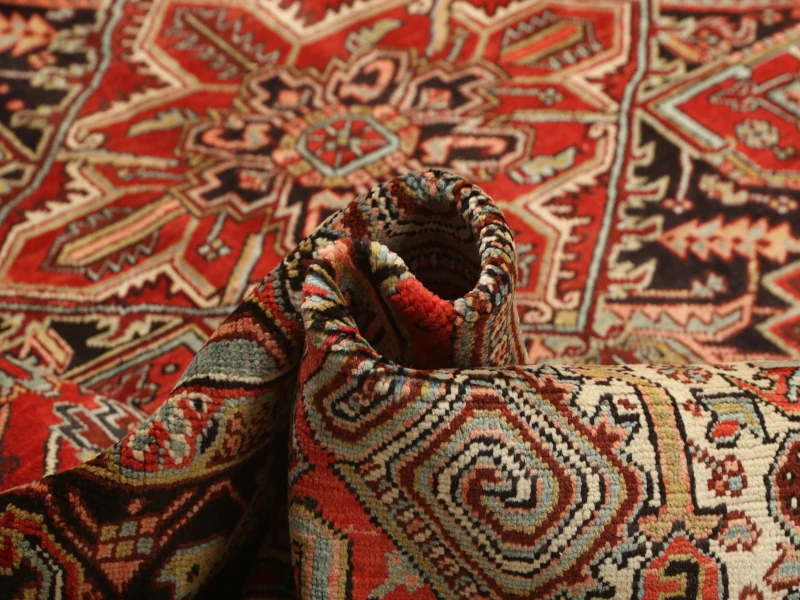
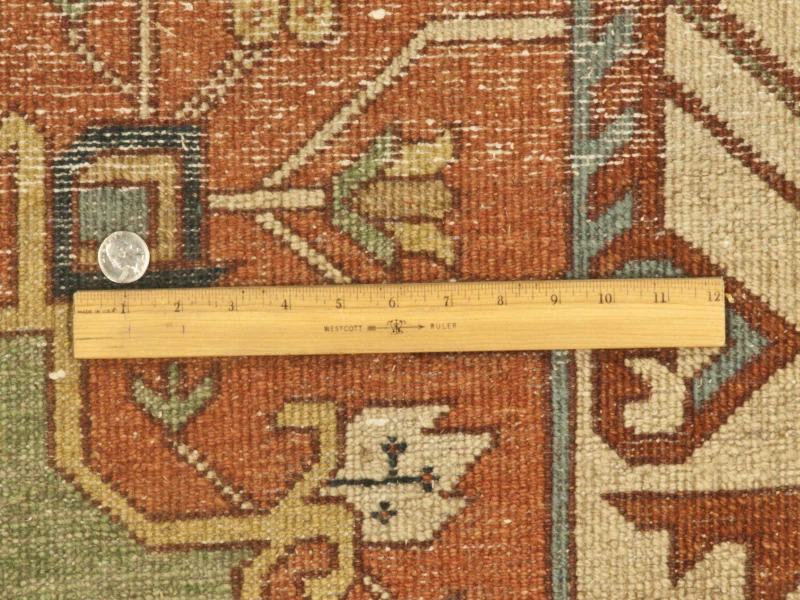
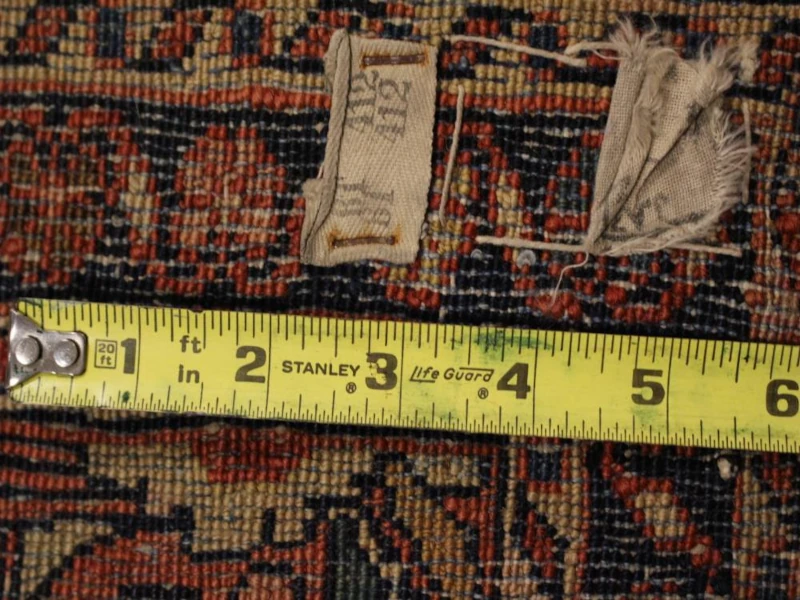
Serapi, Gorevan, bakhshaish, as well as Heriz
itself are the name of villages and also titles
for different qualities and types of structure. Gorevans, for example, are rough and fleshy
pieces while Serapis are fine-woven and
Mehrabans have a quality in the middle. So
there are different numbers for knot count.
Knots are Turkish/symmetrical, Nap is
woolen and warp and weft are of cotton,
dense and heavy, to match the wool’s
coarseness. Alongside the usual area rugs, Heriz is also a
big name in runners. Both runners and rugs
enjoy a good accuracy in construction.
Dyeing and painting of Heriz rugs
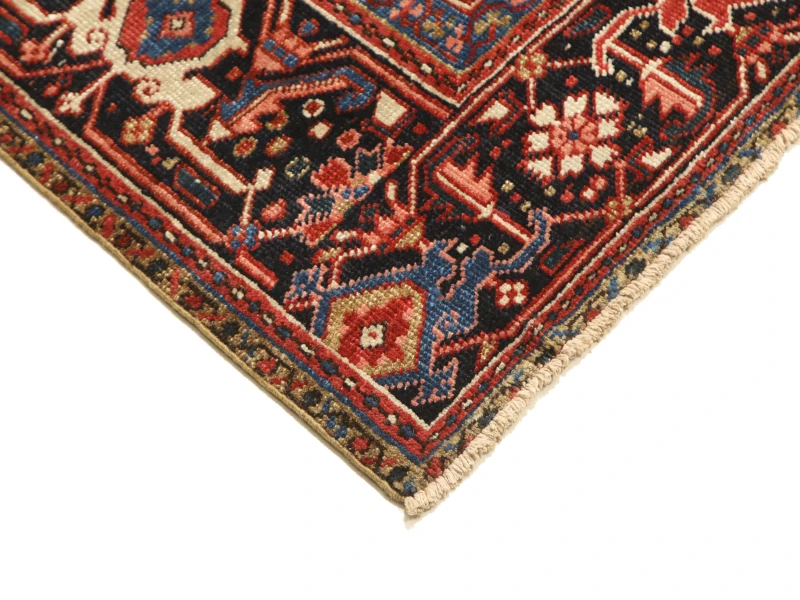
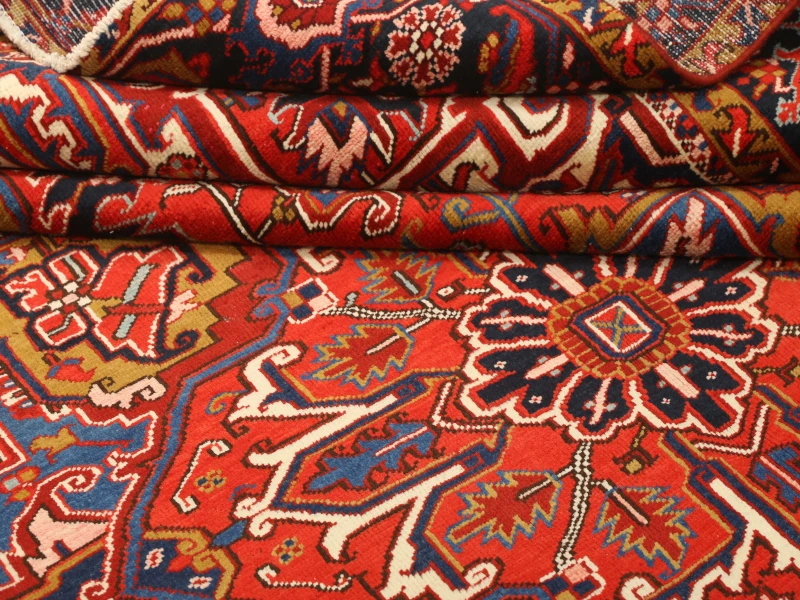
However coarse in texture and sharp in
designig, herizes are delicate, mild and fine
in coloring. The Sabalan’s nature provides a
special kind of madder which brings several
shades of brownish red on pallets, as well as
acid-moderated pinks. The hue of this
madder is so unique you can’t fail to
recognize, especially on the grounds of Heriz
runners. The Khaki-gold used in Heriz, also, works as
a sure sign to Heriz pieces. Different shades
of it shine gleamingly out of deep rosy and
navy blue.
Designs and patterns of the Heriz rugs
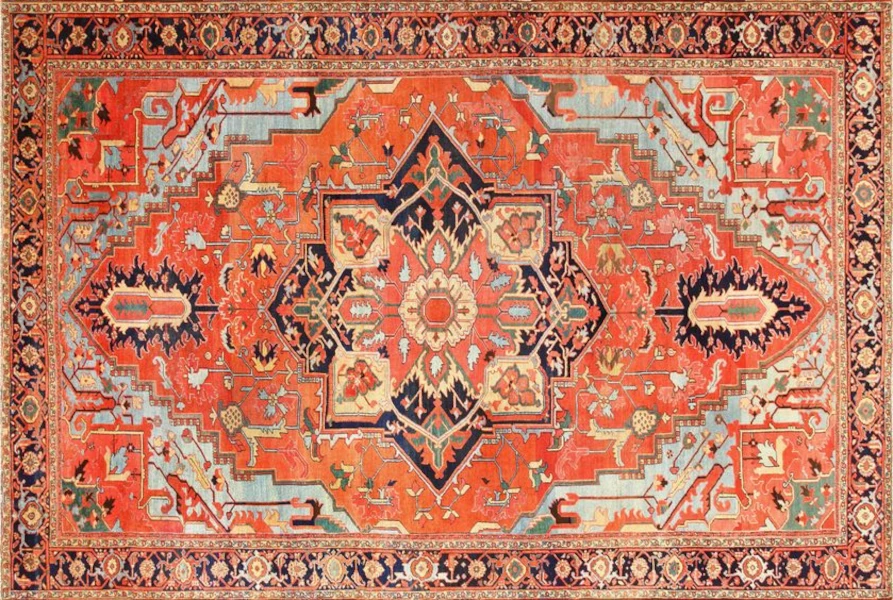
The coarseness of copper-strengthened wool
made weavers to tend to rectilinear patterns
suitable for free weaving designs, rough and
alive. The point is these free designs follow
the basics of curvilinear designs (medallion
as the main example) and that makes the most
recognizable characteristic of Heriz rugs. There are initial samples in weavers’ minds,
but every piece find its own charm at the end.
It would be a difficult tax to find two pieces
alike. Patterns used in Heriz recall some of Tabriz
and Herat but due to their sharp angles, they have become ultimately something different
and unique.
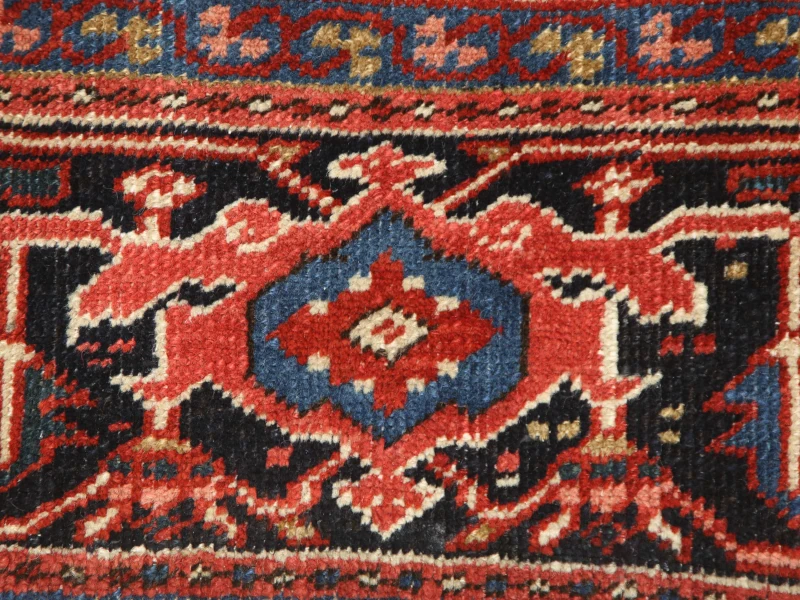
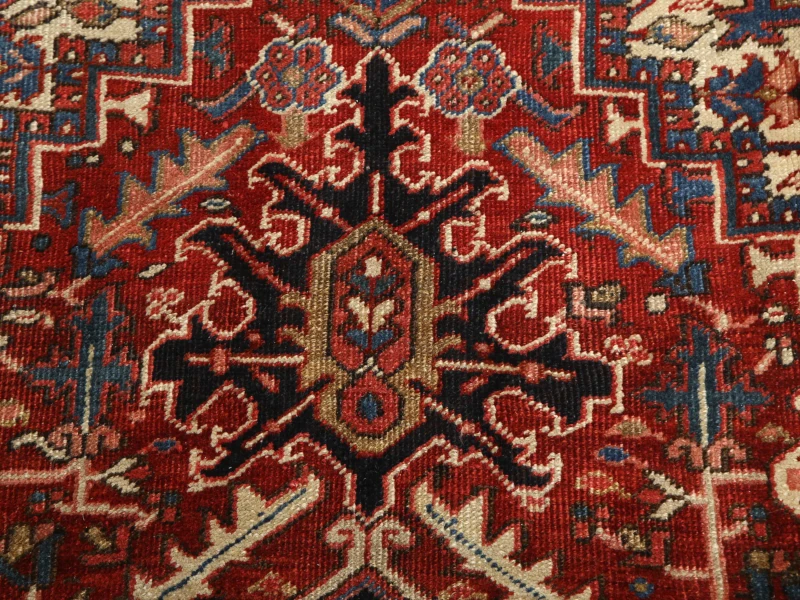
Rectilinear medallions are mostly big,
separated from their matching Lachaks in
corners.


